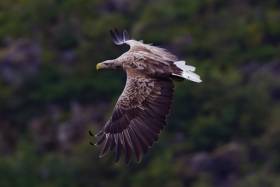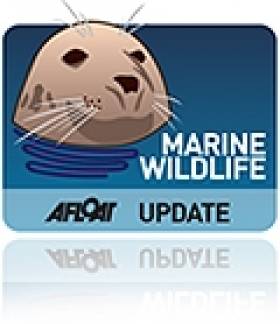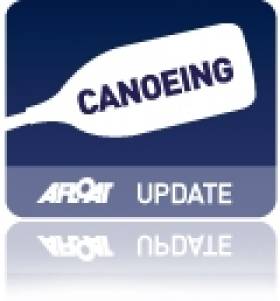Displaying items by tag: white tailed eagle
Sea Eagle Fledges In Bantry Bay
#SeaEagle - West Cork was witnessed its first sea eagle fledging in more than 125 years, as The Irish Times reports.
Local birdwatchers have been observing the young white tailed eagle since it left its nest on Garnish Island in Bantry Bay a fortnight ago.
The fledgling marks the first success for the seabird species in the county since a number of Norwegian birds were released in Killarney as part of a sea eagle reintroduction programme between 2007 and 2011.
The Irish Times has more on the story HERE.
#seaeagle – It is now possible to observe one of the first White Tailed Sea Eagles born in Ireland in over a century courtesy of a new marine wildlife viewing and Iinformation point that has been officially opened on the shores of Lough Derg in County Clare.
Located at Mountshannon Pier and operated by Mountshannon Community Council, the Golden Eagle Trust and Clare County Council, the new Viewing Point features telescopes and information and displays about the White Tailed Sea Eagles. The facility will remain open until the end of September.
Norway's Ambassador to Ireland, His Excellency Roald Næss joined Mayor of Clare Cllr. John Crowe in Mountshannon today in recognition of his country's close links with the Golden Eagle Trust's programme to reintroduce the bird to Ireland.
The Mountshannon breeding pair, a six-year-old male and five-year-old female, were collected as chicks on the island of Frøya off the west coast of Norway by the Golden Eagle Trust. The birds were released in Killarney National Park before relocating to Lough Derg in 2011. The pair, named Saoirse and Caimin, created history in 2013 when they reared the first chicks to fly from a nest in Ireland in 110 years. The pair successfully hatched another chick in late April of this year.
Mayor of Clare Cllr. John Crowe welcomed the introduction of the Viewing Point which he said provides the general public with "a unique opportunity to view the birds at close quarters without disturbing them".
He added: "The breeding success of the Mountshannon pair is in no small part down to the wonderful work of the Golden Eagle Trust, Clare County Council and Mountshannon Community Council, as well as the goodwill and support shown by the local community. This Viewing & Information Point will help to further safeguard these impressive birds and their nesting activities, as well as to promote their ecology and conservation."
Norwegian Ambassador to Ireland, His Excellency Roald Næss described the increase in the number of nesting pairs of White Tailed Sea Eagles in Ireland as "encouraging" and expressed his delight that Norway has played a central role in the reintroduction programme.
He continued: "Norway is home to one of the largest White Tailed Sea Eagle populations in the world and has been instrumental in helping organisations such as the Golden Eagle Trust to reintroduce the species to countries where the bird once flourished but is no longer found. Being able to view this breeding pair thrive here in County Clare is a tribute to everyone concerned and I hope the people who visit this Viewing Point truly value what is happening here."
Welcoming the official opening of the Viewing & Information Point, Dr. Allan Mee, White Tailed Sea Eagle project manager, commented: "We are very conscious of the risk of disturbing the birds especially during nesting periods, so we warmly welcome this structure which is purpose built and designed specifically for the purposes as a Bird Viewing and Information Point. It will help put Mountshannon on the map as the destination to come and enjoy perhaps Ireland's largest and most spectacular breeding bird. To have a nesting pair of eagles here on our doorstep is a unique and one that the local community in Mountshannon will I'm sure help nurture into the future".
The Viewing Point will be maintained by Mountshannon Community Council, whose Chair John Harvey said: "Since the White Tailed Sea Eagles first arrived here three years ago, members of the local community have given tremendous support to the Golden Eagle Trust to ensure the birds were given every possible opportunity to thrive. The Community Council looks forward to welcoming people to the village and the Viewing Point, which we regard as a wonderful addition to the local tourism infrastructure."
Winter Kayaking on the Lakes of Killarney
Bookings are now available for kayaking trips on the lakes of Killarney over the winter months of 2011-2012.
Kayaking on Lough Lein can be done all throughout the winter, the locale providing some great sheltered bays to paddle.
Irish Adventures runs kayaking trips on Lough Lein with a minimum of 2 people (€50 per person).
The route runs from Ross Castle with landings on Inisfallen Island and Ross Island to see the Bronze Age copper mines. There may even be a chance to get a glimpse of the white tailed eagle introduced to Killarney National Park.
All equipment (wetsuits, booties, waterproof jacket and hats) will be supplied.
To book call Irish Adventures at 087 419 0318 (morings 9.30am-12.30pm; afternoons 2pm-5pm) or e-mail [email protected].































































